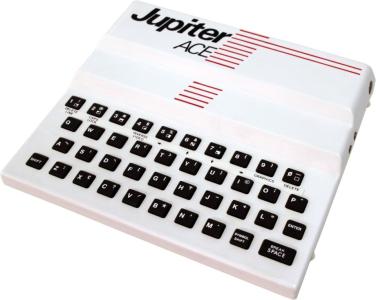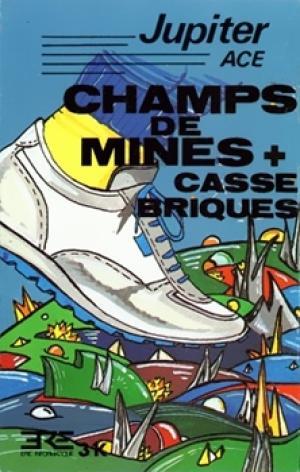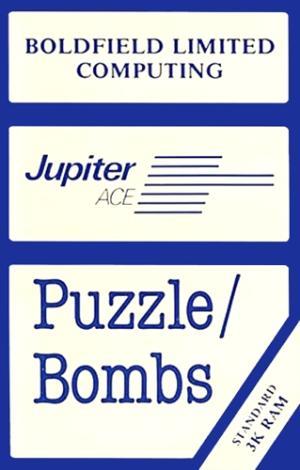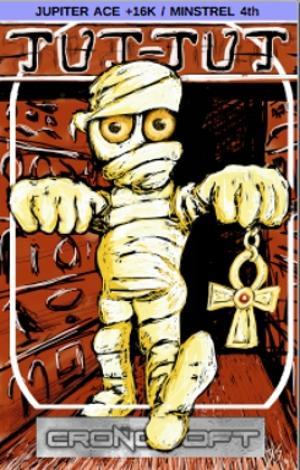
Jupiter Ace
Jupiter Ace Specifications
| Manufacturer: | Jupiter Cantab |
| Developer: | Jupiter Cantab |
| CPU: | Zilog Z80A |
| Memory: | 2 KB for Video + 1 KB base expandable up to 49 KB |
| Graphics: | Independent sub-system with 2 dedicated SRAM banks: Screen (1 KB) + Char Tiles (1 KB) |
| Sound: | Internal speaker, CPU-driven |
| Medium: | Cassette-tape interface (1500 baud) |
| Display: | 32 x 24 monochrome characters, 127 redefinable 8 x 8 pixel characters, semigraphics |
The Jupiter Ace by Jupiter Cantab was a British home computer released in 1982. The Ace differed from other microcomputers of the time in that its programming environment used Forth instead of the more popular BASIC. This difference, along with limited available software and poor character based graphic display, limited sales and the machine was not a success.
The Jupiter Ace is often compared with ZX81 due to its similar size, low cost, and similar form factor. Internally its design is more similar to the ZX Spectrum although the Ace also had a dedicated video memory of 2 KB, partly avoiding the slow down when programs accessed the same bank (same chips) as the video memory. Like the Spectrum, the Ace used black conductive rubber keys although unlike the Spectrum, the keys had a conductive pad that was squashed directly onto tracks on the PCB rather than using a membrane. As a result, the keys would often stop working reliably until they were cleaned or the conductive material was refreshed.
Audio capabilities were CPU-controlled with programmable frequency and duration. Sound output was through a small built-in speaker.
As was common at the time, it used a common tape recorder instead of disk/tape drives. Similarly, a television was needed as a display – but this was in black and white only, rather than the colour supported by competing models such as the Spectrum. A secondary (undocumented) edge connector on the back of the case made some video signals available, presumably for a forthcoming colour video card, but no official product that used this connector was ever released.
The Jupiter Ace was based on the Zilog Z80, which the designers had previous experience of from working on the Sinclair ZX81 and ZX Spectrum.
Both graphics and text could be displayed at the same time: (1) redefinition of the character tiles provided standard 256×192 graphics limited to the 128 available (definable) 8×8 chars, concurrent with plotting of 64×48 graphics.
Internal speaker directly controlled by the CPU in single task mode, with control of sound frequency and duration in milliseconds.
Storage was through a cassette-tape interface at 1500 baud. Files could be used for either storage of Forth programs (compiled code) or raw dumps of memory.
Latest on Jupiter Ace

Champs De Mines + Casse Briques
MINES Traverser un camp de part en part, quoi de plus facile... Mais celui-ci est parsemé de mines invisibles! Un jeu de stratégie et de réflexion. Po...

Puzzle / Bombs
Puzzle: The computer jumbles up the tiles in a random fashion, and when it's finished displays a clock in the top right comer. You now have to rearr...

Tut-Tut
TUT-TUT by GEORGE BECKETT (Original game by David Stephenson) NOW CONVERTED TO THE JUPITER ACE with 16K RAM also available for the Sinclair ZX...